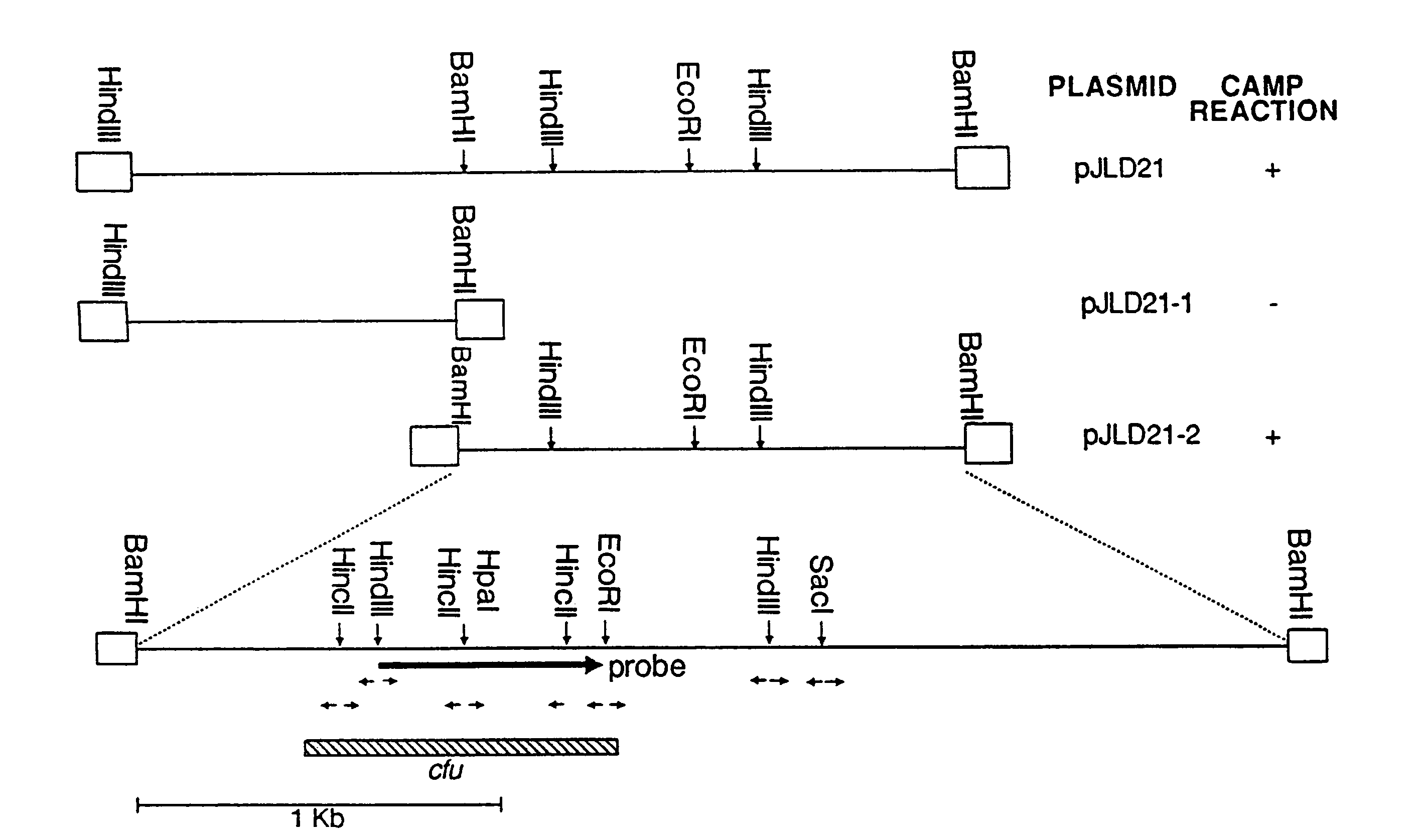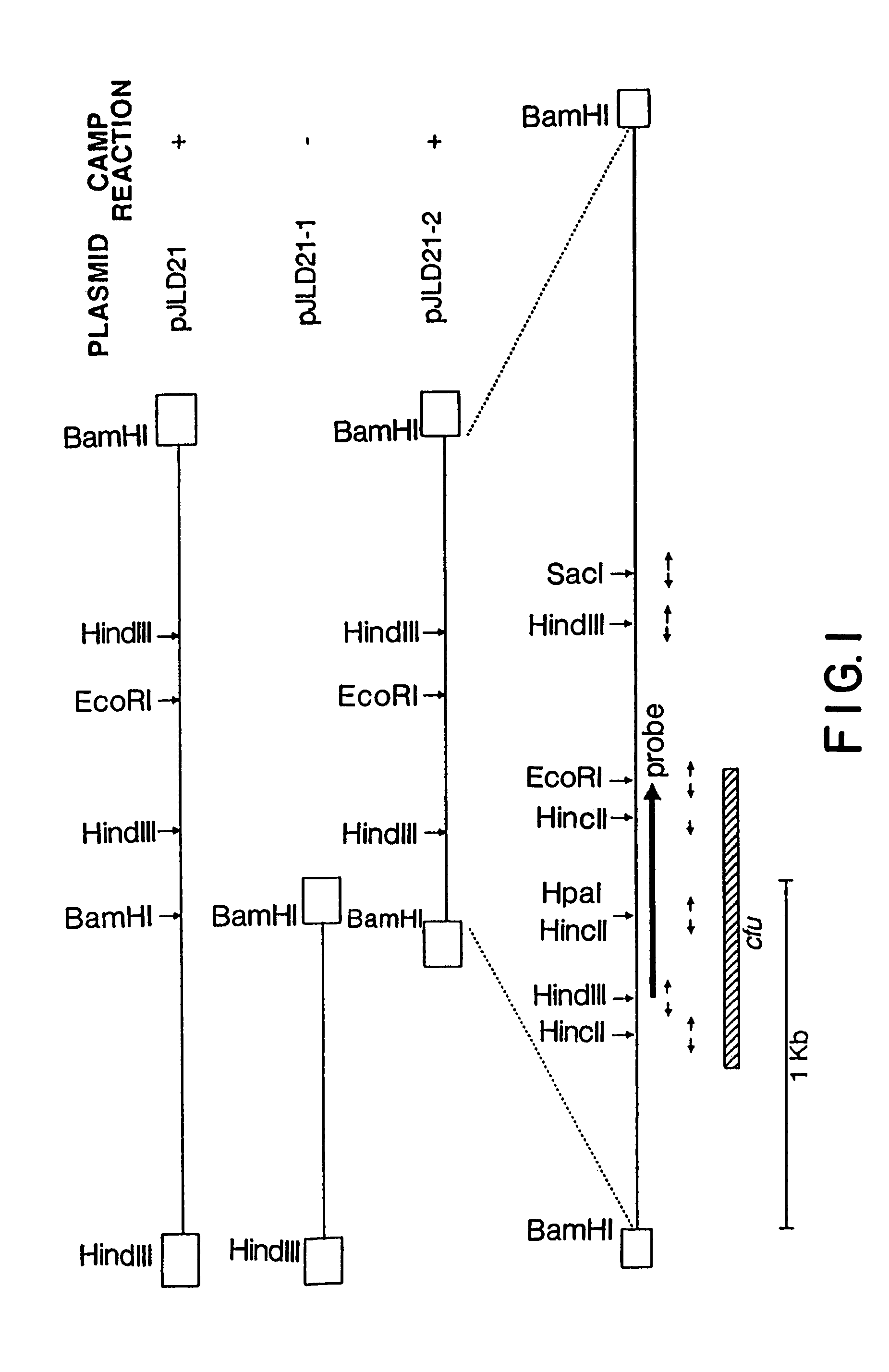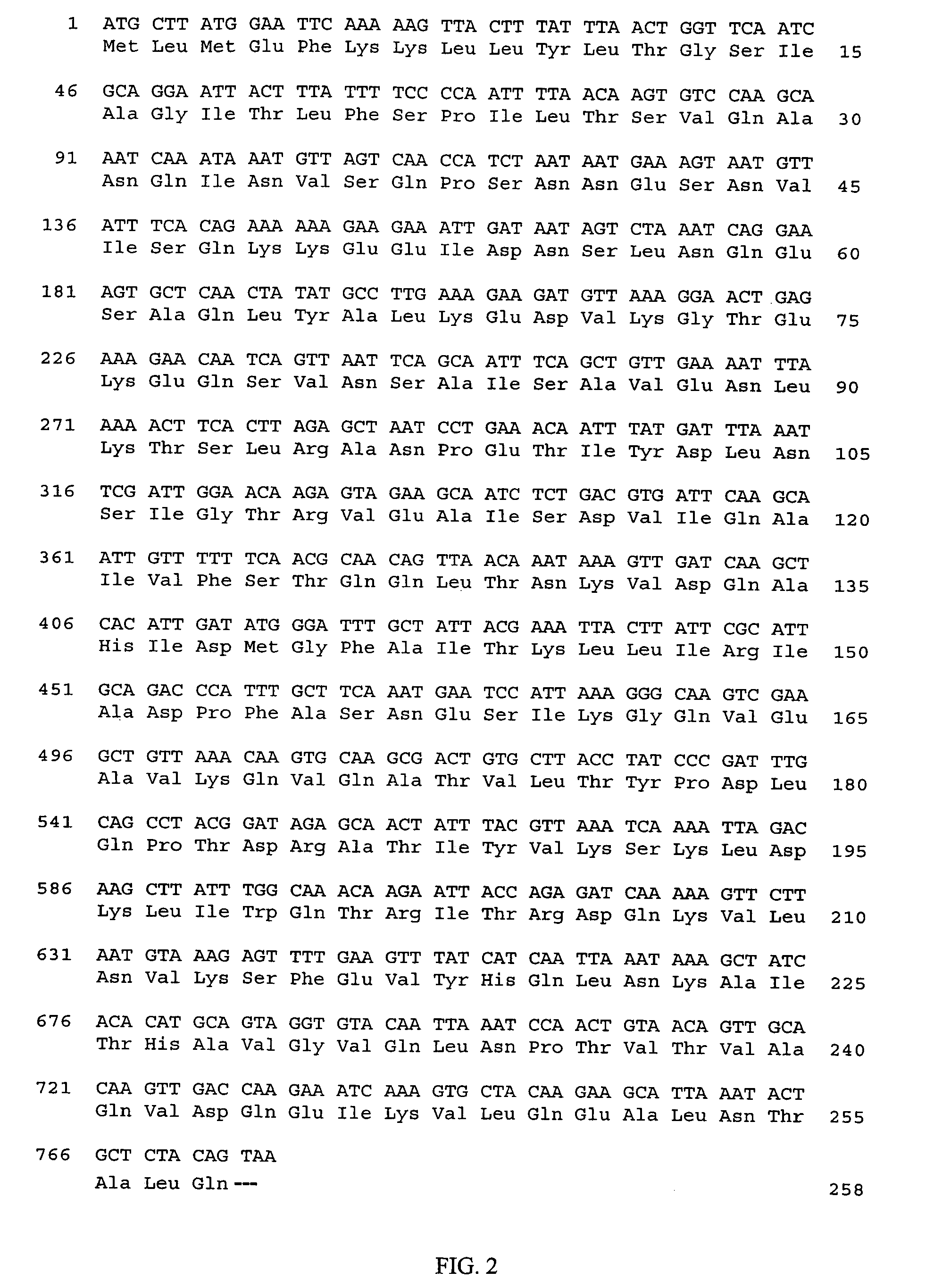Camp factor of Streptococcus uberis
a technology of camp factor and streptococcus uberis, which is applied in the field of bacteria antigens, can solve the problems of not being able to significantly raise the pathogenicity of a sublethal dose, little is known about the role of camp factor in pathogenicity, and the protective capacity of camp factor has not been previously studied
- Summary
- Abstract
- Description
- Claims
- Application Information
AI Technical Summary
Benefits of technology
Problems solved by technology
Method used
Image
Examples
example 1
Cloning and Expression of the S. Uberis CAMP Factor Gene
[0176]Chromosomal DNA of S. uberis (ATCC 9927) was partially digested with Sau3AI and size fractionated in a sucrose gradient; from this, 2- to 5-kb DNA fragments were recovered. The ends of these fragments were partially filled in with dGTP and dATP and ligated into pTZ18R which was cut with SalI and partially filled in with dTTP and dCTP. Following transformation of E. coli JF1754 competent cells, clones expressing the CAMP factor gene were identified on blood plates with ampicillin and beta-toxin on the surface. Six clones from a total of 10,000 were phenotypically hemolytic and each one mediated a distinct CAMP reaction. One of them, containing recombinant plasmid pJLD21, was selected for further study.
[0177]Plasmid pJLD21 contained a 5.2 kb insert fragment and the CAMP factor gene, cfu, was localized within a 3.2 kb BamHI fragment after the CAMP-positive subclone pJLD21-2 was generated (FIG. 1). This subclone was further a...
example 2
Nucleotide Sequence of S. Uberis CAMP Factor Gene
[0181]To obtain the nucleotide sequence of the S. uberis CAMP factor gene, each of the EcoRI, HindIII, HincII and SacI fragments of pJLD21-2 was individually cloned into pTZ18R. Fragments were sequenced in both orientations as shown in FIG. 1. The coding sequence for the S. uberis CAMP factor, as well as the deduced amino acid sequence, is shown in FIG. 2 (SEQ ID NOS:1 and 2).
example 3
Comparison of the S. uberis CAMP Factor with S. Agalactiae CAMP Factor
[0182]To compare the S. uberis CAMP factor with protein B of S. agalactiae, a concentrated culture supernatant of S. agalactiae containing protein B (Jürgens et al. (1985) J. Chrom. 348:363-370) was separated by SDS-PAGE and analyzed by immunoblotting with antibodies against the purified S. uberis CAMP factor. A 25 kDa protein band from the S. agalactiae supernatant reacted in the immunoblot. This data indicated that monospecific antibodies raised against the S. uberis CAMP factor could cross-react with S. agalactiae protein B. This is not surprising since alignment of the amino acid sequence of the S. agalactiae CAMP factor with the deduced amino acids of the S. uberis CAMP factor showed 66.4% identical residues (FIG. 4).
PUM
| Property | Measurement | Unit |
|---|---|---|
| molecular weight | aaaaa | aaaaa |
| w/w | aaaaa | aaaaa |
| concentrations | aaaaa | aaaaa |
Abstract
Description
Claims
Application Information
 Login to View More
Login to View More - R&D
- Intellectual Property
- Life Sciences
- Materials
- Tech Scout
- Unparalleled Data Quality
- Higher Quality Content
- 60% Fewer Hallucinations
Browse by: Latest US Patents, China's latest patents, Technical Efficacy Thesaurus, Application Domain, Technology Topic, Popular Technical Reports.
© 2025 PatSnap. All rights reserved.Legal|Privacy policy|Modern Slavery Act Transparency Statement|Sitemap|About US| Contact US: help@patsnap.com



